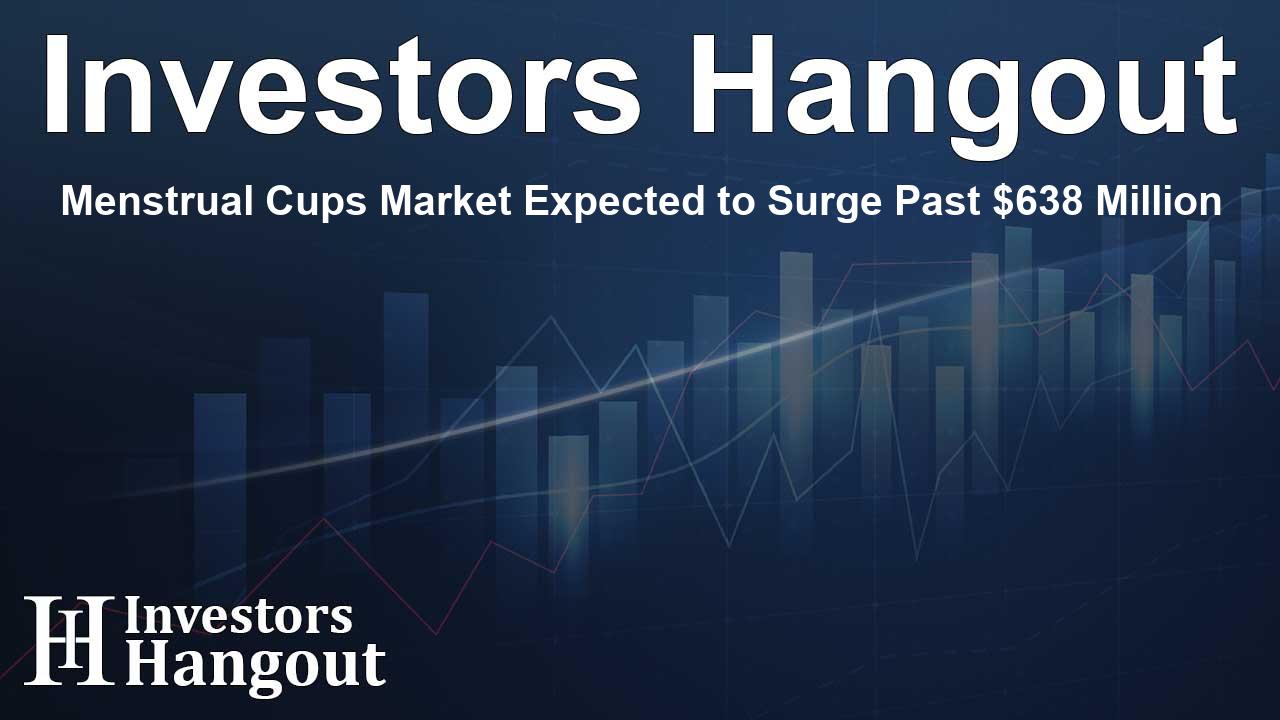Menstrual Cups Market Expected to Surge Past $638 Million

Menstrual Cups Market Expected to Surge Past $638 Million
The global menstrual cups market has demonstrated remarkable growth, with its valuation projected to exceed $638.53 million in the coming years. With increasing awareness of sustainable menstrual products and a shift towards environmentally friendly options, menstrual cups have established themselves as a viable alternative to traditional disposable options.
Growth Drivers of the Menstrual Cups Market
The surge in popularity of menstrual cups can be attributed to several factors. A strong increase in awareness regarding eco-friendly products has prompted consumers to seek alternatives that minimize their environmental impact. Menstrual cups, crafted from medical-grade silicone, rubber, or latex, provide a reusable and sustainable option that can last up to a decade.
Recent reports indicate that a significant portion of women, particularly in developed countries, are becoming more informed about menstrual cups. For instance, the awareness of menstrual cups rose remarkably from 45% in 2019 to 72% in 2024, highlighting a shift in consumer preferences.
Cost Savings and Financial Benefits
One of the compelling reasons behind the rapid adoption of menstrual cups is the substantial cost savings they offer. Studies show that over a 10-year period, using a menstrual cup can lead to a savings of up to 95% compared to purchasing disposable pads and 93% relative to tampons. This financial advantage makes menstrual cups increasingly appealing to consumers across various demographics.
Environmental Considerations
The environmental challenges posed by disposable menstrual products cannot be ignored. Traditional pads and tampons contribute significantly to landfill waste and plastic pollution. In stark contrast, menstrual cups generate substantially less waste—approximately 0.4% of the plastic waste produced by single-use pads over a decade. This considerable difference underscores the environmental viability of menstrual cups.
Impact on Carbon Emissions
Research indicates that menstrual cups can significantly reduce carbon emissions related to menstruation. A study revealed that the use of menstrual cups can lead to a 96% decrease in carbon emissions compared to tampons and a 93% decrease compared to pads—making them a more sustainable choice for users.
Challenges to Adoption and Awareness
Despite the benefits, various barriers exist that may hinder the widespread adoption of menstrual cups. Cultural taboos and a lack of awareness continue to restrict usage, particularly in conservative regions. Many educational resources do not address menstrual cups, leaving gaps in understanding their benefits and usability.
Educational Initiatives and Outreach
Efforts to educate and promote menstrual cups are crucial in breaking down these barriers. Government initiatives, alongside NGO campaigns, are increasingly being implemented to raise awareness. In fact, a recent outreach program significantly increased menstrual cup adoption rates by 40% in certain regions.
Market Trends and Future Prospects
As we look to the future, the menstrual cups market is likely to continue its positive trajectory, driven by the aesthetics of comfort in design improvements, online sales growth, and innovative product developments like biodegradable cups. Digital marketing and influencer campaigns are expected to further propel their adoption, providing valuable insights to consumers unfamiliar with menstrual cups.
Technological Innovations
The intersection of technology and menstrual health is also an exciting area of growth. Future iterations of menstrual cups could include innovative features like flow sensors, appealing to a tech-savvy audience while promoting better menstrual health management.
Frequently Asked Questions
What is the projected value of the menstrual cups market?
The menstrual cups market is expected to reach over $638.53 million in the upcoming years.
What are the key factors driving the growth of menstrual cups?
Major factors include environmental sustainability, cost savings, and increasing awareness among consumers.
How much can users save by switching to menstrual cups?
Users can save up to 95% in costs compared to disposable pads and 93% compared to tampons over ten years.
What challenges affect the adoption of menstrual cups?
Cultural stigmas and limited awareness in certain regions pose significant barriers to widespread usage.
What future trends can we expect in the menstrual cups market?
We can expect product innovations, technological advancements, and a surge in e-commerce sales to shape the future of the market.
About The Author
Contact Hannah Lewis privately here. Or send an email with ATTN: Hannah Lewis as the subject to contact@investorshangout.com.
About Investors Hangout
Investors Hangout is a leading online stock forum for financial discussion and learning, offering a wide range of free tools and resources. It draws in traders of all levels, who exchange market knowledge, investigate trading tactics, and keep an eye on industry developments in real time. Featuring financial articles, stock message boards, quotes, charts, company profiles, and live news updates. Through cooperative learning and a wealth of informational resources, it helps users from novices creating their first portfolios to experts honing their techniques. Join Investors Hangout today: https://investorshangout.com/
The content of this article is based on factual, publicly available information and does not represent legal, financial, or investment advice. Investors Hangout does not offer financial advice, and the author is not a licensed financial advisor. Consult a qualified advisor before making any financial or investment decisions based on this article. This article should not be considered advice to purchase, sell, or hold any securities or other investments. If any of the material provided here is inaccurate, please contact us for corrections.
